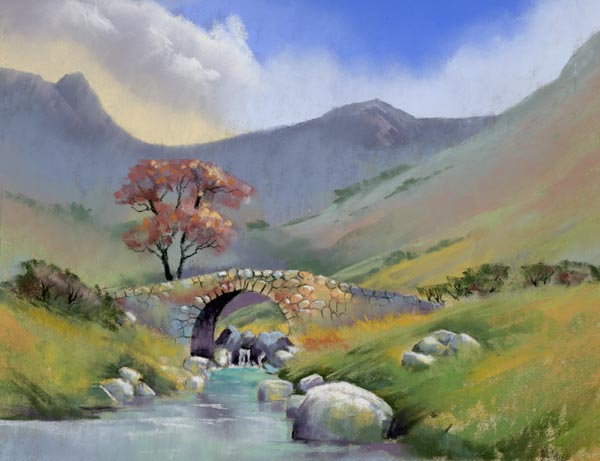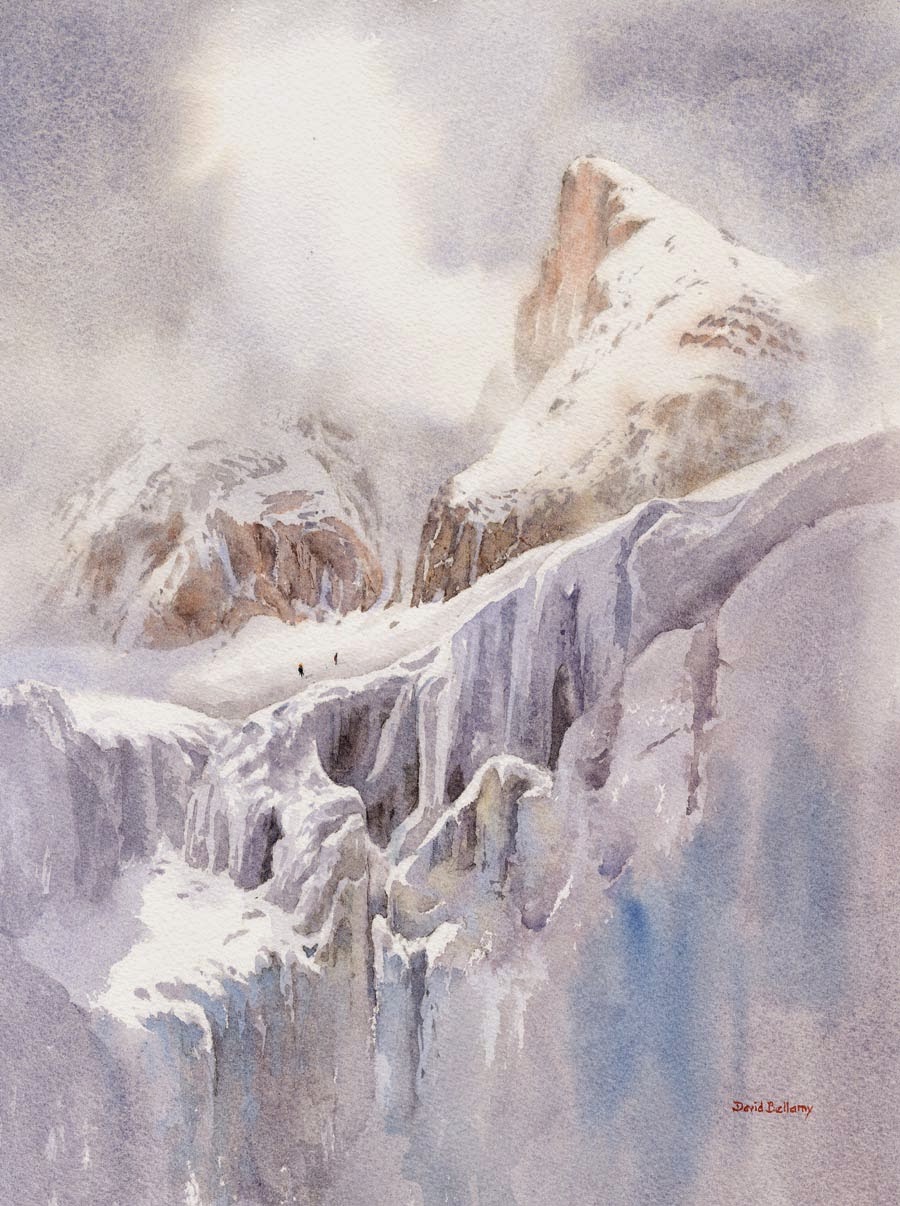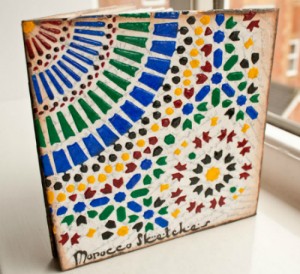Including figures in a landscape painting is one of the most basic ways of suggesting a sense of scale, but in a vast landscape where do you position them, and how large should they be? These can be critical decisions for the artist, especially as figures tend to immediately attract the eye of the viewer. They therefore become the focal point.
In this large watercolour of Gyrn Las in Snowdonia the two figures are barely discernible in such a small reproduction. They are actually standing at the top of the small stream descending to the right of centre in the lower part of the composition. Even in the original they are not obvious, but once you know they are there they impart a feeling of being completely dwarfed in an immense landscape. They could not have been painted much smaller without completely losing them, but had they been made much larger the scene would appear a great deal smaller.
The optimum position for placing figures is about one-third into the painting from either side and one-third from the top or bottom of the composition, but this can be varied to a degree, to suit the scene. Here they are a little less than one-third in from the bottom, but about one-third from the right-hand side.
This watercolour, and many other works can be seen in the Autumn/Winter exhibition “Harmony” at Boundary Art, Cardiff’s newest art space, where you can enjoy a Chinese tea while contemplating the exhibits which range from traditional to contemporary paintings in oil and watercolour by many artists. The exhibition runs from Saturday 14th November to 31st December. Boundary Art is at 3 Sovereign Quay, Havannah Street in Cardiff Bay, CF10 5SF Tel. 02920 489869 Check out the website at http://www.boundaryart.com





